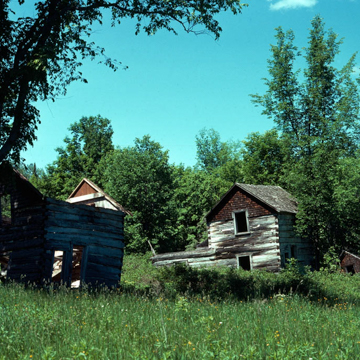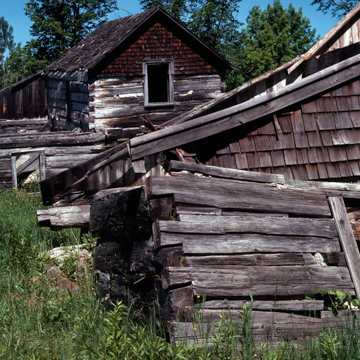Once a thriving copper-mining town, Victoria is now reduced to foundations, mine pits, and several log buildings. The site was discovered in 1772 by Alexander Henry, an English explorer, but drew national attention through the efforts of Julius Eldred, who removed from the Ontonagon River the famed six-thousand-pound Ontonagon copper boulder, now housed in the Smithsonian Institution. The Forest Mining Company of Boston began operating here in 1850. It was reorganized as the Victoria Mining Company in 1858, but a forest fire and spring flood that year destroyed the mill and many of the surface structures, thus closing the mine for half a century. In 1899 the reorganized Victoria Copper Mining Company reopened it and ran it until 1921, when it closed forever.
Of the nearly two hundred buildings that stood here during World War I when the population of the mining town peaked at 1,850, only a handful of the dovetailed log workers' houses remain. Although some may date from the 1850s, they were altered with foundations, new floors, interior plaster, and lean-to additions. The Society for the Restoration of Old Victoria leases the ten acres on which the old buildings stand. Just to the south, the sawmill location shows the foundations of nine structures and of an old road, now used as a snowmobile trail. Adjacent to the mine area were the company boardinghouse, store, hospital, offices, ballroom, warehouses, and other buildings. Five company houses now serve as private dwellings. In the mining area are two mine shafts, now sealed in concrete, and the foundations of other mining structures. Today volunteers work to preserve the site.







